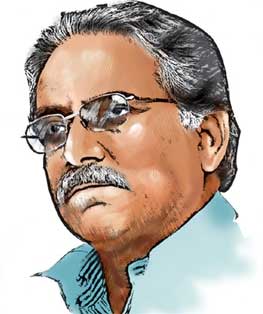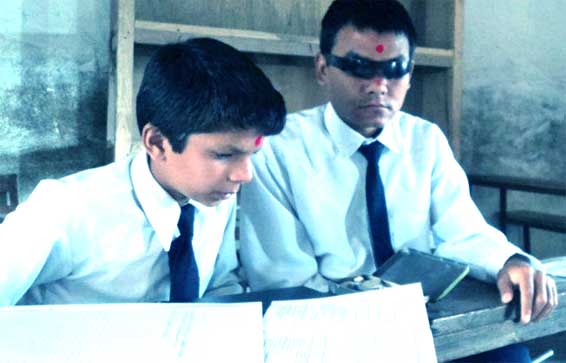Prachandapath (aka Prachanda Way or प्रचण्डपथ in Nepali) is a communist revolutionary political thought created by Nepal’s Maoist leader Pushpa Kamal Dahal Prachanda. The ideology is inspired by Peru’s Shining Path and is named after Pushpa Kamal’s nickname Prachanda.
Prachandapath advocates that if a communist revolution in a country like Nepal is to succeed, the revolutionary strategy should be to control rural areas, and then encirclement of urban settlements. Prachandapath relies heavily on other Marxist ideologies and concepts and argues that since Nepal has its own unique historical, political, social and geographical contexts, the country needs its own, contextualised revolutionary ideology.

Adopted in 2001, Prachandapath was the guiding principle of Nepal’s Maoists until during Nepal’s Maoist war. Prachandapath has been revised and updated since Nepali Maoist rebels came to a peaceful negotiation and joined mainstream politics. Reportedly, the latest version of Prachandapath is similar to that of Madan Bhandari‘s Janatako Bahudaliye Janabad.
Prachandapath has had a deep impact on Nepali Maoists’ progress during Nepal’s armed conflict. In his political documents Prachanda advocates that, in the wake of the collapse of the Soviet Union, the communist revolutionary ideology suffered a serious setback and if it is to survive, it needs a constructive approach to revolution.
In an article written by Maoist leader Mohan Baidhya Kiran in 2003, he describes Prachandapath as follows:
“This overall philosophical concept is based upon the dialectical unity between fundamental development of People’s War and fundamental ideas of Prachanda Path. Comrade Prachanda has played an excellent role in the task of developing theories of scientific socialism in the midst of applying dialectical materialism. This concept of development of democracy in the twenty-first century has, on one hand, charted a clear course to reach communism by shattering entire obstructions that come up in the socialist society and, on the other, has hit hard with a strong theoretical blow upon those class enemies and revisionists, who while pretending to be great democrats and accusing revolutionary communists of dogmatism, totalitarianism and mono-partyism, are in fact the real killers of People’s democracy. Summing up seriously the revolutions and counterrevolutions of twentieth century, we are going to accomplish a very new type of decisive People’s War in the twenty-first century on the basis of new enriched theories of democracy asserted by Prachanda Path.
In the historical process of Nepalese society making a qualitative leap from the world of necessity to that of freedom, Prachanda Path has been imparting intense and accelerative motion to it through the great People’s War. Along with the same accelerative motion of intense class war Prachanda Path also is developing. This is based upon a great goal and ideal of accomplishing revolution and preventing counterrevolution. Standing at the apex of MLM, facing intensive challenges of governing imperialism and proletarian revolution in the twenty-first century, Prachanda Path, which is struggling to explore great possibilities, has developed several new theoretical concepts. The theoretical contributions of Comrade Prachanda that have been enriched through new contents amidst the process of theoretical development and new inventions are demanding to be expressed accordingly in a few form. In this situation, Prachanda Path is now standing in a new turning point of history to make a qualitative leap in the process of becoming universal, not particular. We must be serious on expressing new content in a new form.”


